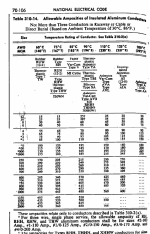HVAC is a bit outside my expertise, but (a) most A/C systems are grossly oversized, so they won't run full blast for 3 hours even under design worst-case conditions and (b) even if you have a non-oversized A/C unit, and it runs for 3 hours straight during a heat wave, I bet its current draw will still vary over that 3 hours, and (c) even if its current draw is sufficiently constant over those 3 hours, my understanding is that it will typically be below the nameplate current.
The nameplate current corresponds to some idealized set of conditions of indoor and outdoor temperature and relative humidity, which I presume is a theoretical worst case, and real world indoor and outdoor conditions are not likely to match those idealized conditions for 3 hours straight. It is, to my understanding, akin to asking how often a solar panel will put out its full nominal rated power.
Cheers, Wayne

